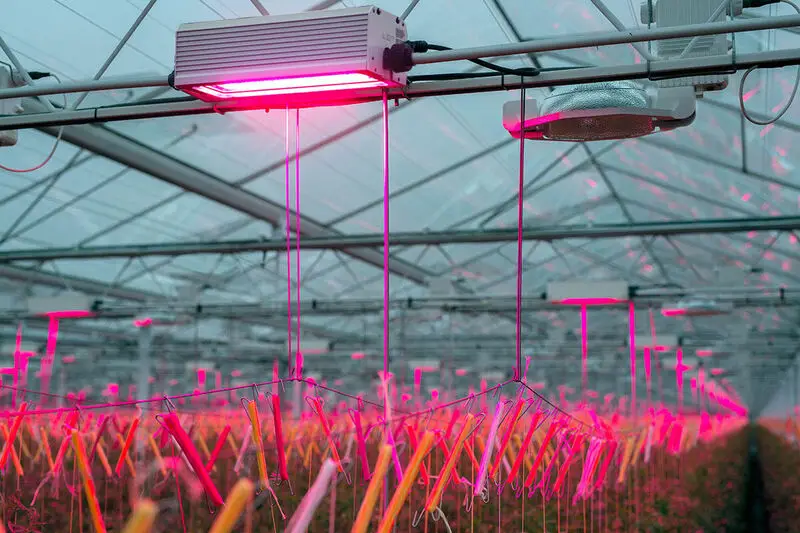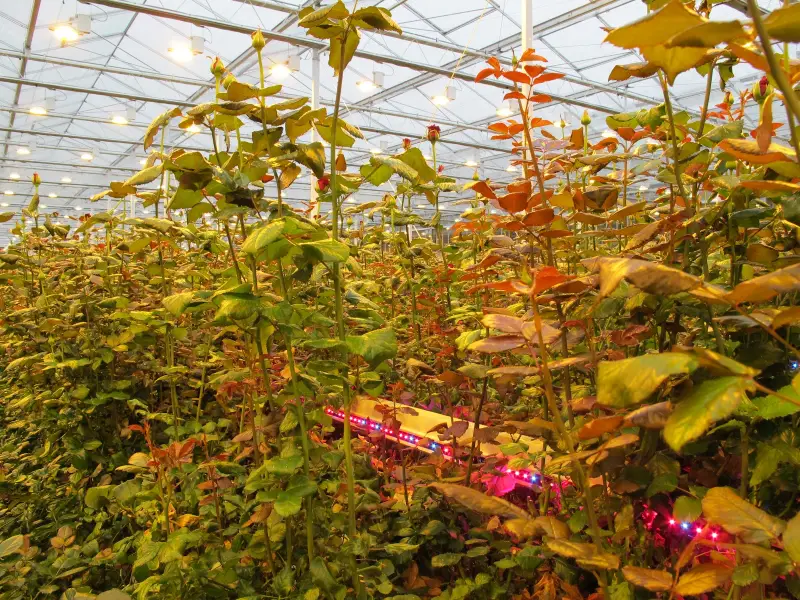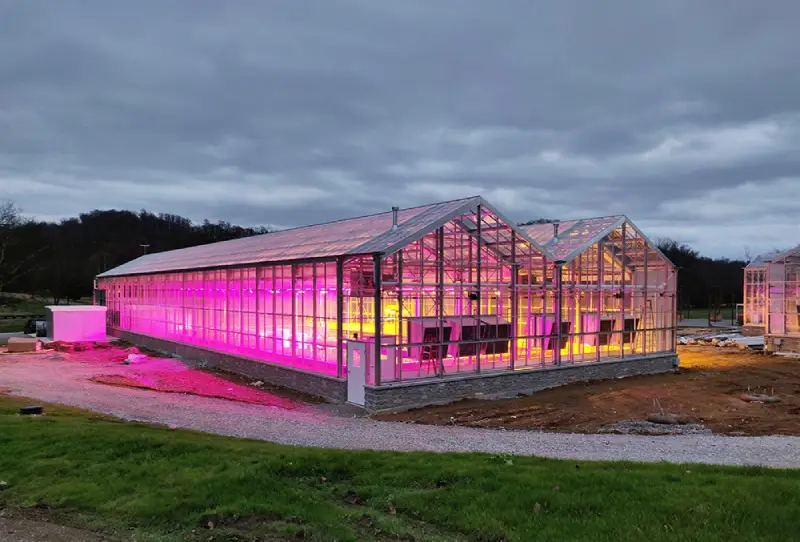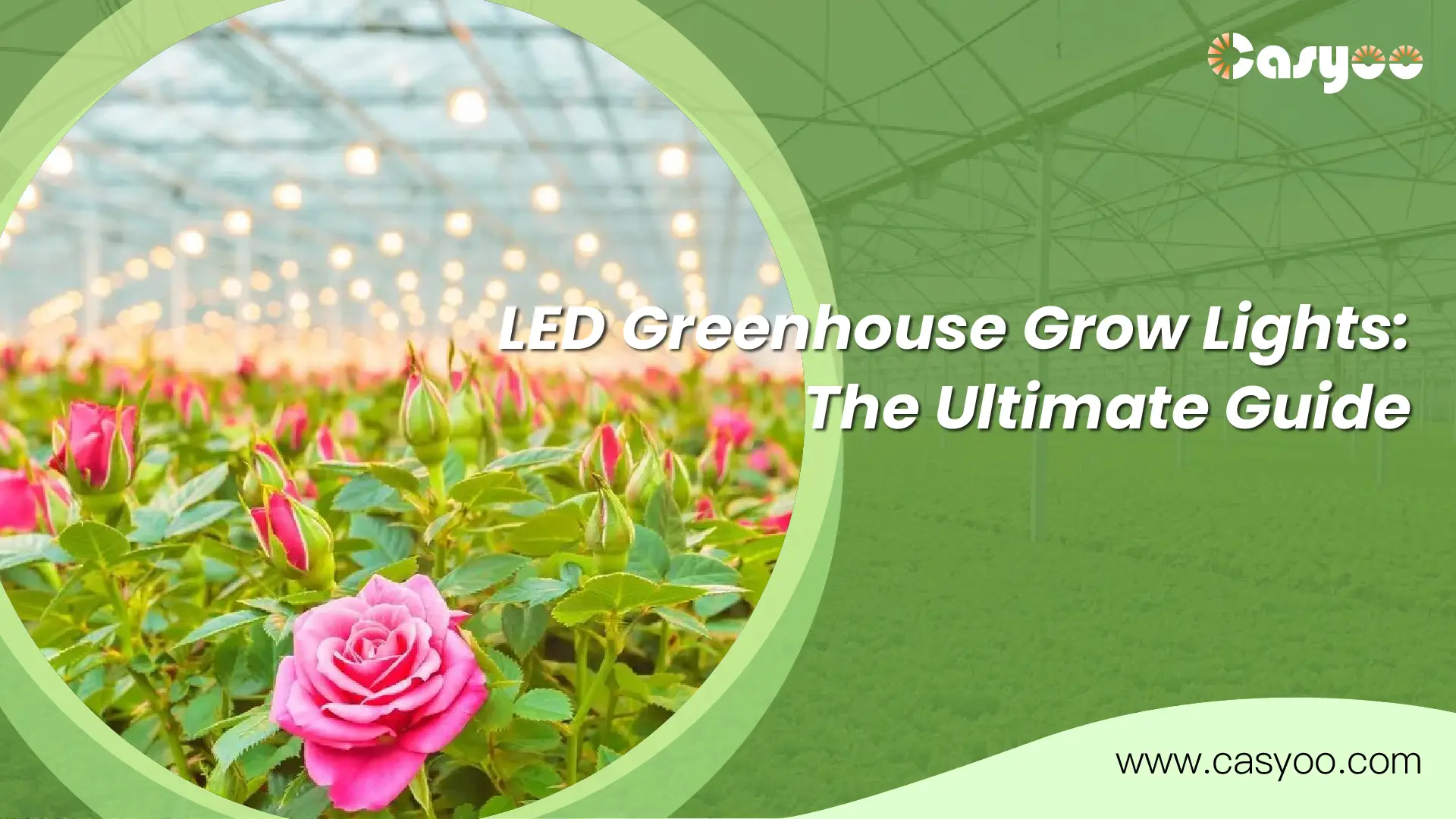There is already insufficient light in autumn and winter, and the greenhouse is blocked by construction materials and insulation equipment, which will lead to a serious lack of sunlight and uneven dispersion, resulting in reduced yield and quality of your greenhouse crops. In this case, we need to use supplementary lighting to supplement the plants in the greenhouse. Today, we will discuss commercial LED greenhouse grow lights in detail.
LED Greenhouse Grow Lights
LED is the most promising technology for greenhouse grow lights. The PPE of LED lights is higher than that of HPS lights, and this number is still increasing. Moreover, the red wavelength in LED is higher than that of HPS bulbs, which means that LED grow lights can better encourage plants to photosynthesize.
Based on the hanging method and irradiation direction of the fixture, as well as the relative position of the LED light source, the lamp and the canopy, greenhouse supplemental lighting technology is divided into six categories: greenhouse top supplemental lighting, top lighting, interlighting, canopy supplemental lighting, (ground) vertical side supplemental lighting and multi-layer lighting system.
Let’s talk about the common two types among them:
Top lighting

With the feature of LED light source pointing downward as a cool light source, LED grow lights for greenhouses are put above the canopy parallel to the canopy to vertically illuminate the upper surface of the canopy. This type of lighting is ideal for greenhouse planting techniques with thin canopies, high density, and a relatively neat upper surface of the canopy, such as seedling cultivation and leafy vegetable production. Since LED grow lights run cool, they can be placed at a relatively close distance above the plants. At present, LED greenhouse lights can be installed directly above the crop canopy through cultivation devices such as culture racks, hydroponic racks, or movable lamp racks.
Interlighting

Interlighting technology is to place LED greenhouse lights at the height of the canopy between two rows of crops and design bidirectional or unidirectional illumination of the photosynthetically active leaf groups of the canopy through specific luminous angles. The irradiation angle is as perpendicular to the leaves as possible to increase the intercepted light intensity level. This method is suitable for bidirectional LED grow lights. This technology is good for lighting in tall fruit and vegetable greenhouses, such as tomatoes and cucumbers, and can maximize the photosynthetic capacity of photosynthetically active leaf groups and transport the energy to the growth points and fruits at close distances.
Types of LED Greenhouse Grow Lights
Fluorescent Grow Lights
Fluorescent grow lights are not the most popular choice because they are bulky and produce low yields. They are good for seeds starting.
Incandescent Lights
These lights were the first to be introduced into agriculture. They are less intense and produce a lot of heat. They are suitable for crops that require warm temperatures and low light levels.
In terms of efficiency, they are not the best choice because their lights cannot be used for large growing areas and they can burn the plants when they are placed too close. They also have a high energy consumption and are expensive to maintain. All of this makes them unsuitable for growing greenhouse plants.
HID Grow Lights
HID grow lights are popular because they produce intense light. However, due to their high intensity, they produce a lot of heat and it is essential to manage the heat to remove the heat from inside the greenhouse. The main types of HID lights are CMH, HPS, and MH lights.
LED Grow Lights
It uses light emitting diodes, as the acronym suggests. These LEDs emit high light intensity and are warmly welcomed by growers around the world for their high efficiency and variable spectrum. Unlike HID fixtures that require reflectors, they do not require additional materials to fully function. Scientific studies have shown that LED grow lights for greenhouses are more effective than HSP lamps.
They are ideal for use on a commercial scale. Compared to other types of lamps, LED grow lights feature a built-in cooling system that makes them cooler and less detrimental to your crops. The most important advantage is that they can change the spectrum to meet the specific needs of plants in the greenhouse.
How to improve light distribution in greenhouses?

Greenhouse structure
Choose an optimized greenhouse plastic structure to increase the angle of the lighting surface and improve light transmittance.
Covering material
Choose a plastic drip-free film that has good light transmittance, is resistant to aging, and is pollution-free as a transparent covering material. If the material is not selected well, a layer of water droplets will adhere to the inside of the film, which can reduce the light transmittance by 20-30%.
Reflective surface
Using reflective materials such as polyester film or white painted surfaces on the walls and ceilings of the greenhouse can help distribute light more evenly. This will reflect light onto your crops.
Reasonable layout of crops
- Strictly control the height of crops, and maintain a uniform group structure with shorter plants grown in the south and higher plants in the north. The overall height of the crops should be limited to 3/5 of the height of the greenhouse. It is best to control the height of the plant between 1.5 and 1.7 meters to avoid high shelves, deterioration of light conditions, and reduced photosynthetic efficiency.
- Appropriately reduce the planting density in the north of the greenhouse. From south to north, the planting density of each row should be gradually reduced. When planting cucumbers, the spacing in the south is about 20 cm, the spacing in the middle is about 25 cm, and the spacing in the middle and north is about 28 cm. The spacing of the 2 to 3 plants in the north can be expanded to about 30 cm, and try to ensure uniform light between the individual plants in the group.
Light mover
A light mover is a device that slowly moves the grow light back and forth to provide uniform light distribution for all plants. This prevents overexposure to direct light and shadows.
Final thought
The greenhouse is an evolving industry. And the process is interesting, so if you want to explore this path, you will benefit a lot from it. Confusion is the main problem most beginners face in the initial stage. However, once you can grow through this stage, the benefits afterward are huge.
If you want to know more about LED greenhouse grow lights, talk to us anytime.




